Long Beach Water Department is leading by example to gently ease citizens out of the mindset that wants to seed or unroll mowable turf grass as the default landscape. Who else is better positioned to educate the public on alternative landscapes for those expansive lawns that just won’t cut it anymore on Southern California’s average rainfall of 15 inches a year? At their own offices, this is exactly what they’ve done. Nothing fancy, no prohibitively expensive hardscape to dash low-budget hopes, just old-fashioned, solid plantsmanship.
During some errands yesterday, I stopped by their offices on 1800 E. Wardlow in Long Beach, which are tucked quite a ways back from the road.
If it wasn’t for this Agave vilmoriniana waving at me, I might have driven right on by.
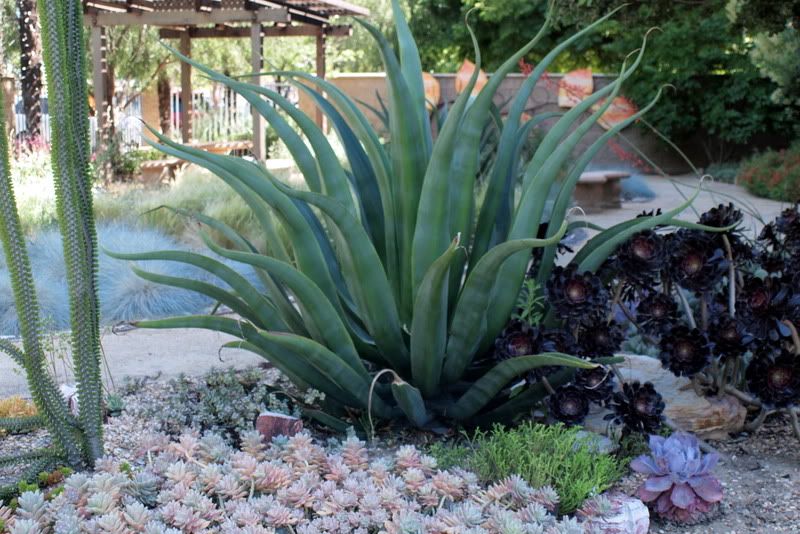
Thyme interplanted among pavers and possibly a yellow gazania. Unlike thyme, Dymondia magaretae tolerates foot traffic. Here bordered by grasses and gaura.
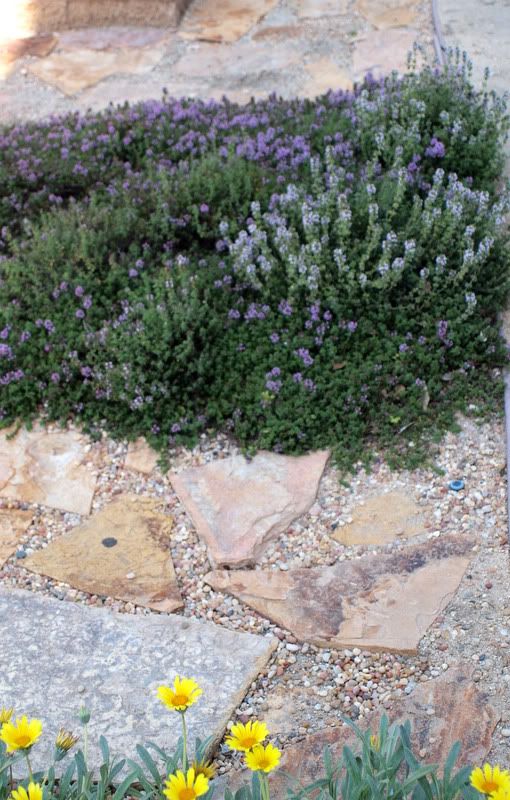
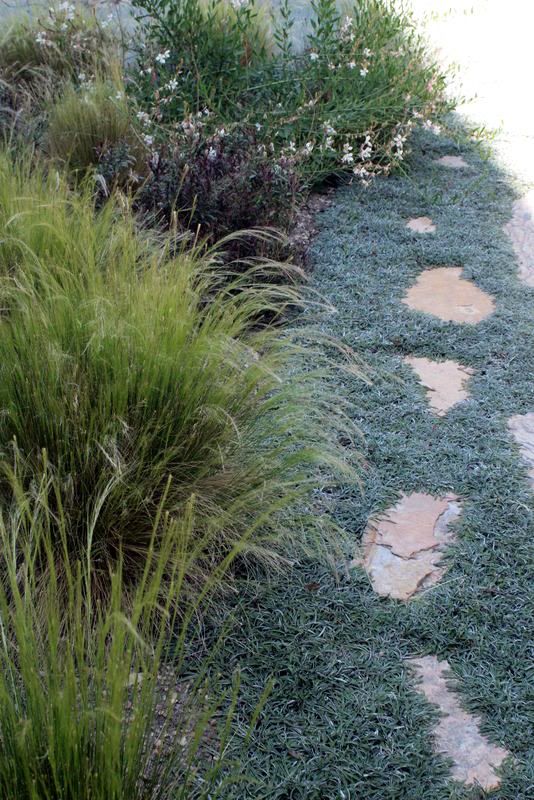
Dendromecon rigida with the beach aster, Erigeron glaucus, in the background, a line of newly planted dudleyas barely visible to the left.
Decomposed granite paths weave among the plantings.

C’mon, men. Don’t mow your landscape, play with it. Drop the mower, put on a loincloth and build a cairn. You know you’ve always wanted to, but cairns just look silly on lawns and need to be surrounded by something windswept. Now grab a Guinness and admire your handiwork.
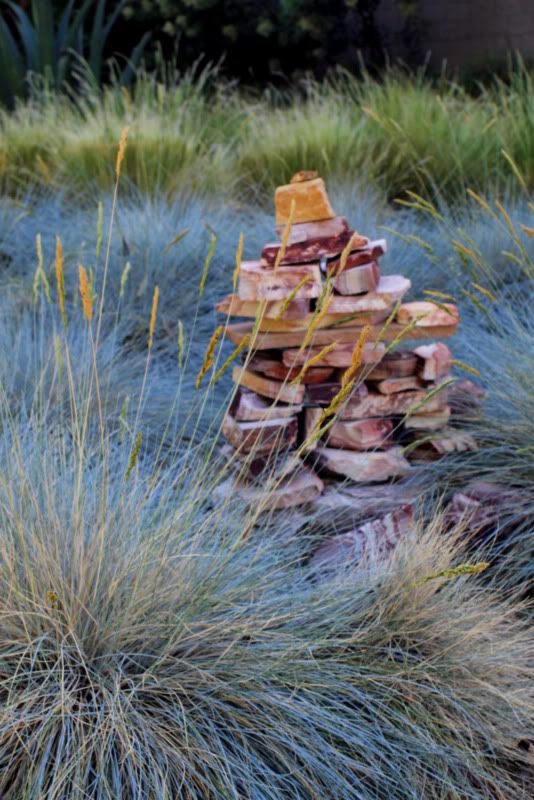
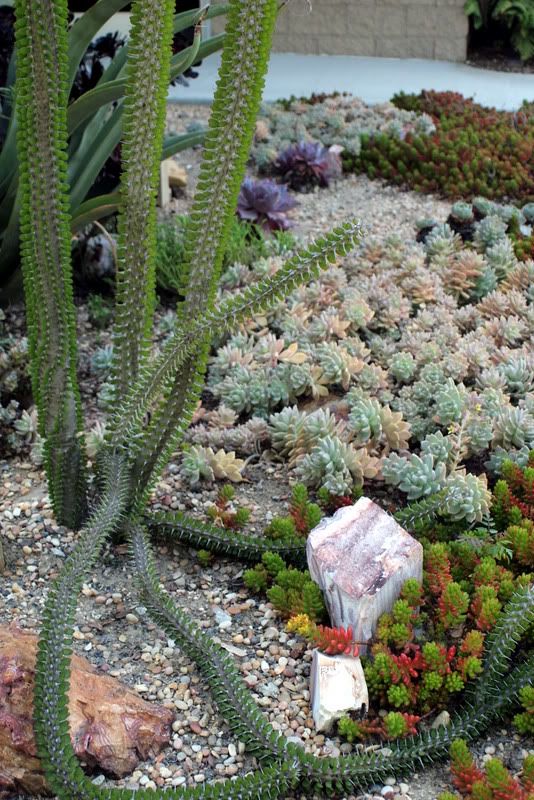
In the first photo above, grasses are a blue fescue and Stipa tenuissima, the latter getting the haircut treatment my husband gives ours in the parkway. Many Southern California designers are no longer utilizing this potentially invasive stipa, but you have to give it credit for its role as a gateway grass, building further interest in bunch grasses. As far as I can tell, it is universally beloved by all who see and touch it.
Second photo above: Ocotillo, Fonquieria splendens underplanted with Sedum rubrotinctum (‘Pork and Beans’) and Graptopetalum paraguayense (‘Ghost Plant’).
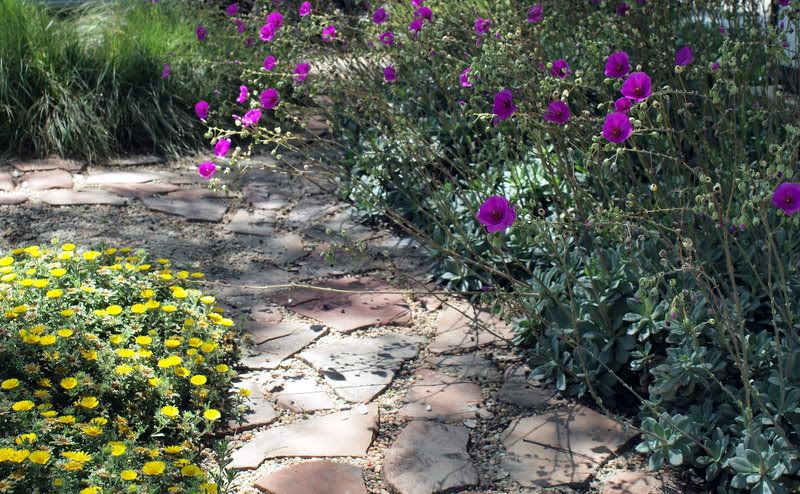
The plantings were a mix of natives and exotics, including the Chilean Calandrinia grandiflora, magenta flowers in the above photo, as well as the New Zealand sedge, Carex testacea not pictured. Some native plants that were not photographed included toyon, Heteromeles arbutifolia (fronted by a big planting of Lobelia laxiflora), Salvia clevelandii, Salvia spathacea, Agaves shawii and deserti.

I’m a convert. Move me to southern California.
Nicely done ! This is exactly the type of public installations we need more of.
Fantastic — should be inspiring to any who happen upon it. Maybe they should put it on a tour so folks can find it.
Wonderful to see this happen with city planners and grounds. We are having the worst drought here in 100 years and I can’t say enough in regards to my dry rock beds and how well they can take it. On the other hand, the lawns are brownish green and terrible unless watering occurs almost daily. If I could get my yard to look as good as these pictures, I’d convert the rest in a minute. I have so much shade that it’s always a tough call to find the right plant. Still, I search…
David/ 🙂
James, this kind of landscape is still a hard sell. I’m glad you like it.
Kathy, there’s other demo gardens by LB Water I’ll have to track down. Stay tuned.
Pam, that’s a good idea, to include this garden on a waterwise tour.
David, a SoCal climatologist predicted drought for us this winter due to La Nina conditions, but then we had a banner winter for rainfall. Re-interviewed in spring, scientist said it looks like Texas got the drought instead. I am sooo sorry it’s still dry there.
local government can do so much to (un)pave the way to this type of garden by attractive examples like this!
Wow wow does that look great! With even the sense to use villamoriana instead of intensely suckering americana. Most excellent! One question: Ocotillo? or Alluaudia procera?
Janine, my sentiments exactly!
Hoov, I’m pretty sure this is the American ocotillo. In fact, I think I copied the name from a plant label. And that is a good agave selection, no spines, etc. Seems like it would make some great hybrids — hmm, some research needed on that point.
I like your characterization of this “old-fashioned, solid plantmanship.” If these plants thrived in Portland, I’d be delighted with this simple but highly attractive garden. Our city water quality department has an innovative office building on the Willamette river with lots of rain gardens and natives. It works!